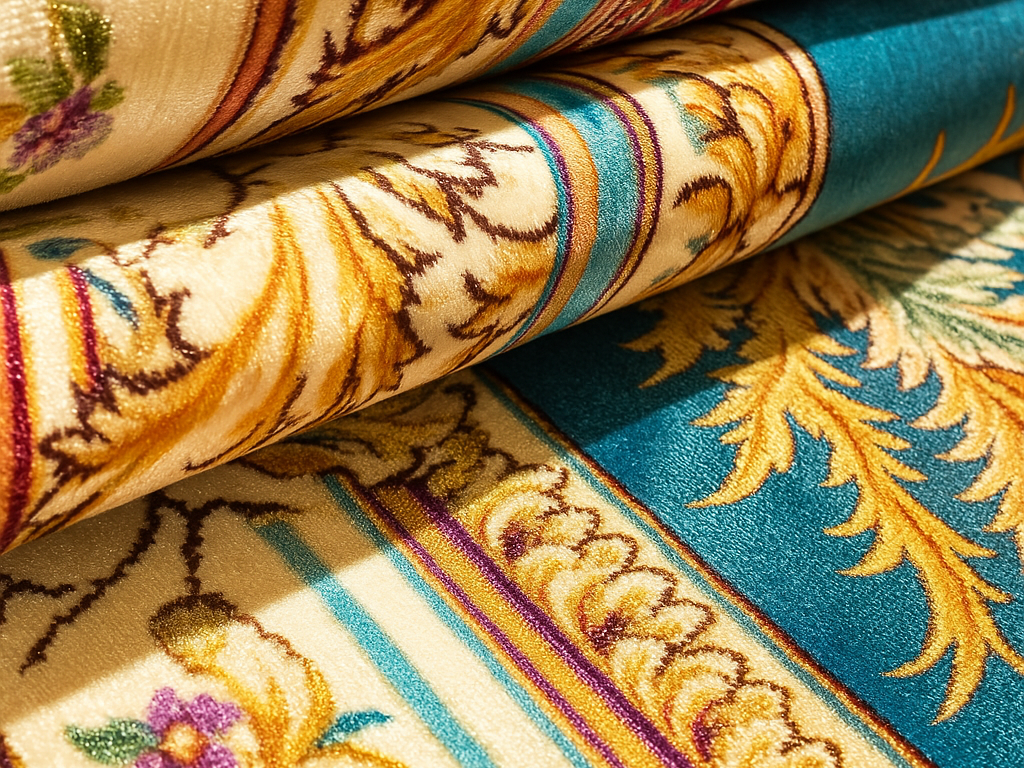A well-chosen dining room rug does more than just sit under your table—it anchors the space, enhances comfort, and adds a layer of style that ties everything together. But selecting the right rug involves more than picking a pattern you like. From size and shape to material and maintenance, there are several factors to consider. Here’s a comprehensive guide to help you navigate the essentials of choosing the perfect dining room rug.
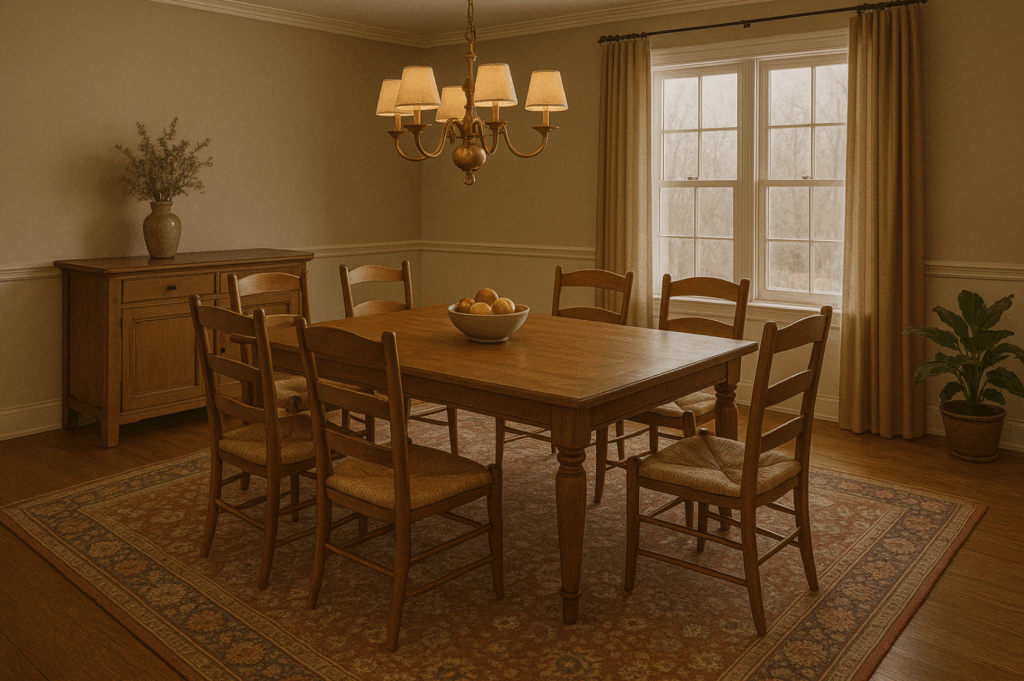
1. Why Your Dining Room Needs a Rug
A rug in the dining room serves multiple purposes beyond aesthetics. It defines the dining area, especially in open-concept spaces, creating a visual boundary that distinguishes it from adjacent areas. Moreover, rugs add warmth and comfort underfoot, making meals more inviting. They also help dampen noise, reducing echoes and creating a more intimate dining experience. Additionally, a rug can protect your flooring from scratches and spills, preserving its longevity.
2. Rule 1: Prioritize Proper Rug Size for Your Dining Room
An ill-fitting rug can disrupt the room’s balance and hinder movement, while a well-sized rug anchors the space and enhances comfort.
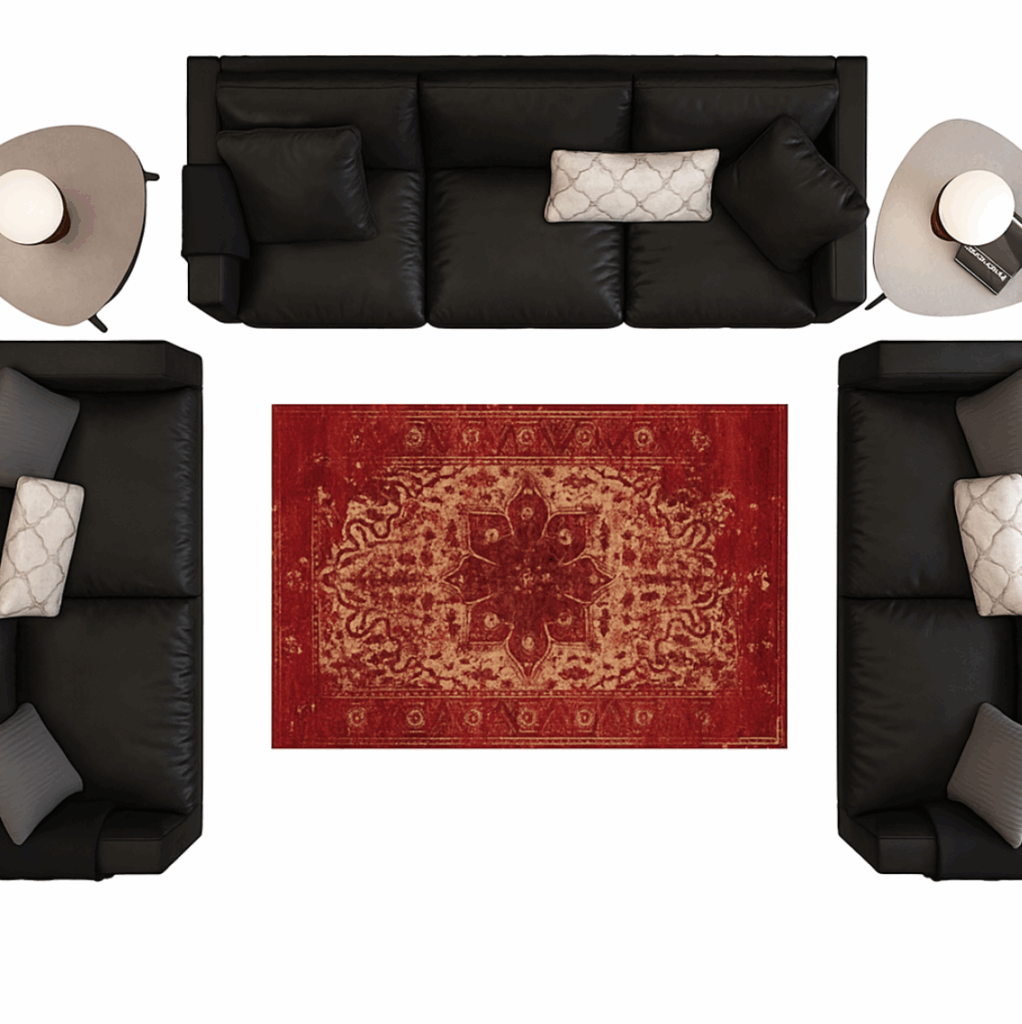
Why Rug Size Matters
A correctly sized rug ensures that all dining chairs remain on the rug, even when pulled out, preventing wobbling and protecting your floors. It also defines the dining area, especially in open-concept spaces, creating a cohesive look.
General Sizing Guidelines
- Extension Beyond Table: The rug should extend at least 24 to 30 inches beyond all sides of the dining table. This allows chairs to stay on the rug when pulled out, ensuring stability and floor protection.
- Room Proportions: Maintain a balance between the rug size and the room dimensions. Ideally, leave about 12 to 18 inches of bare floor between the rug edges and the walls to frame the space without making it feel cramped.
Recommended Rug Sizes Based on Table Dimensions
| Table Size | Recommended Rug Size |
| 4′ x 6′ (seats 4-6) | 8′ x 10′ |
| 5′ x 8′ (seats 6-8) | 9′ x 12′ |
| 6′ x 10′ (seats 8-10) | 10′ x 14′ |
| 4′ round (seats 4) | 8′ round |
| 6′ round (seats 6) | 10′ round |
These sizes ensure that chairs remain on the rug when in use, providing comfort and preventing damage to the flooring.
3. Rule 2: Match Rug Shape to Dining Table Shape
Matching the rug shape to your dining table is a foundational design principle that enhances both aesthetics and functionality in your dining space. This alignment creates visual harmony, ensures ease of movement, and contributes to a cohesive room layout. Here’s an in-depth look at how to effectively pair rug shapes with various dining table configurations:
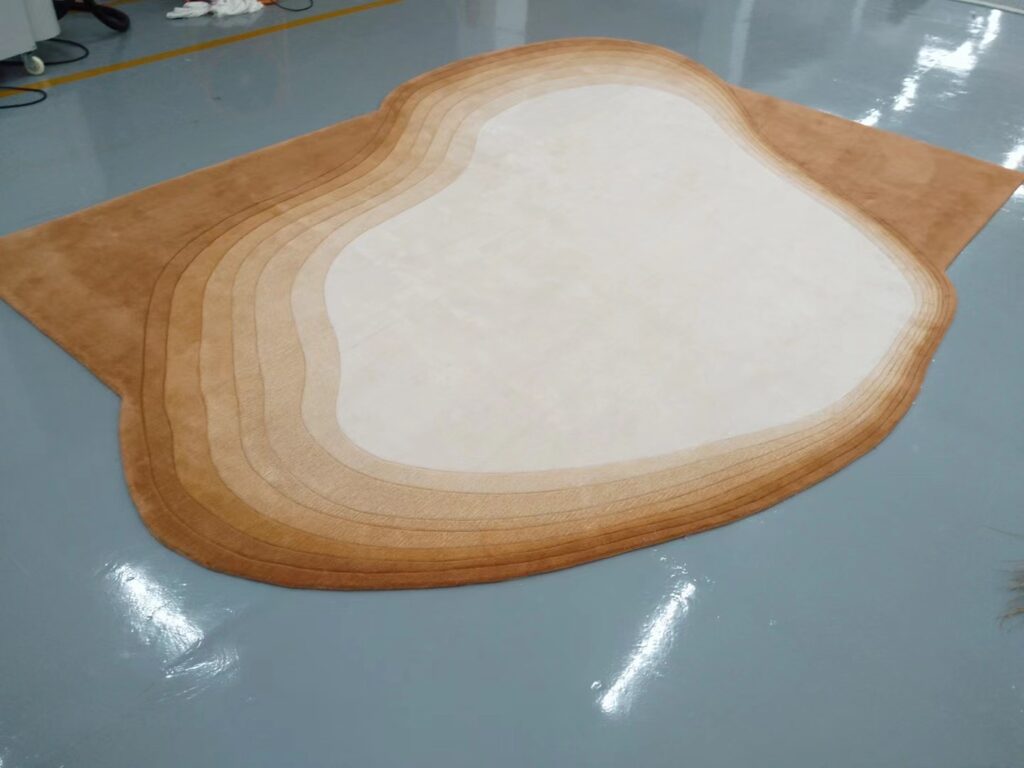
Rectangular Tables: Embrace Rectangular Rugs
For rectangular dining tables, a rectangular rug is the most harmonious choice. This pairing reinforces the linearity of the table, creating a balanced and unified look. Ensure the rug extends at least 24 inches beyond all sides of the table to accommodate chairs, even when pulled out. This not only enhances comfort but also protects your flooring from scratches and wear. In open-concept spaces, a rectangular rug can help define the dining area, providing a clear visual boundary.
Round Tables: Opt for Round or Square Rugs

Round dining tables pair beautifully with round rugs, as the similar shapes create a sense of intimacy and cohesion. This combination is particularly effective in smaller dining areas or breakfast nooks. Alternatively, a square rug can also complement a round table, offering a modern twist while still maintaining symmetry. Ensure the rug is large enough to accommodate chairs when pulled out, typically extending 24 to 30 inches beyond the table’s edge.
Square Tables: Square or Round Rugs Work Well
Square dining tables offer versatility in rug pairing. A square rug mirrors the table’s shape, reinforcing a balanced and orderly aesthetic. Conversely, a round rug can soften the angular lines of the table, introducing a dynamic contrast that adds visual interest. The choice between square and round rugs depends on the desired design effect and the overall room decor.
Oval Tables: Rectangular or Oval Rugs for Elegance
Oval dining tables, with their elongated curves, are best complemented by rectangular or oval rugs. A rectangular rug provides a structured frame, while an oval rug echoes the table’s contours, enhancing the room’s elegance. Ensure the rug is sufficiently large to allow chairs to remain on the rug when pulled out, maintaining both comfort and visual balance.
Unique or Unconventional Table Shapes: Consider Custom or Organic-Shaped Rugs
For dining tables with unique or unconventional shapes, such as hexagonal or asymmetrical designs, custom or organic-shaped rugs can be an excellent solution. These rugs can be tailored to mirror the table’s contours, creating a bespoke look that enhances the room’s individuality. Alternatively, a neutral rectangular rug can provide a subtle backdrop that allows the table’s distinctive shape to stand out.
4. Rule 3: Choose Durable and Easy-to-Clean Materials
The dining area is a high-traffic zone prone to spills, crumbs, and frequent chair movement, necessitating a rug that is durable, easy to clean, and complements your home’s style. Here’s an in-depth look at materials that meet these criteria:
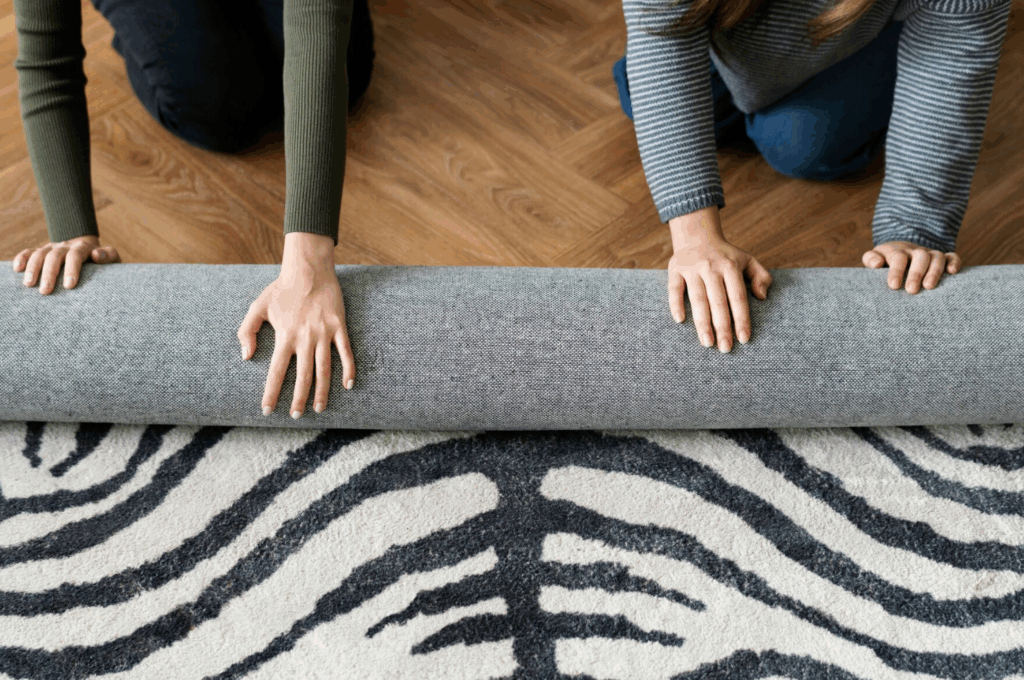
Wool: The Premium Natural Choice
Wool is renowned for its durability, softness, and natural stain resistance. Its fibers contain lanolin, which repels liquids, making it easier to clean up spills before they set in. Additionally, wool’s resilience allows it to recover well from furniture compression, maintaining its appearance over time. However, wool rugs tend to be more expensive and may require professional cleaning for deep stains.
Synthetic Fibers: Practical and Budget-Friendly
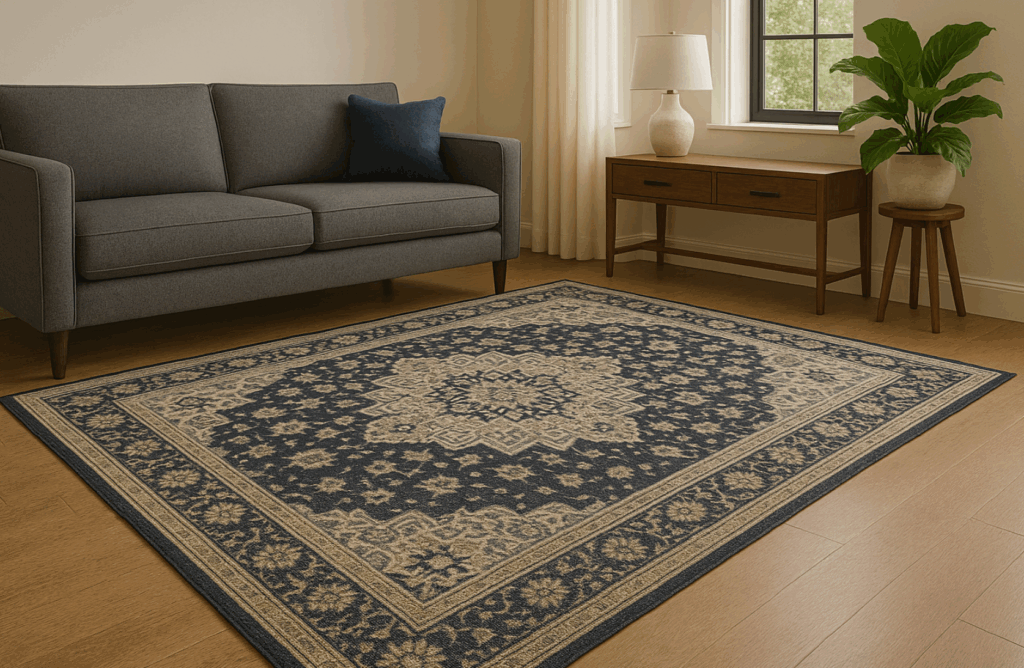
Synthetic materials like polypropylene, nylon, and polyester offer affordability and ease of maintenance. Polypropylene is particularly popular for its stain resistance and ability to mimic the look of natural fibers. Nylon is known for its strength and resilience, making it suitable for areas with heavy foot traffic. Polyester provides vibrant color options and is naturally resistant to fading. These materials are often machine-washable, adding to their convenience.
Natural Fibers: Eco-Friendly Options
Natural fibers such as jute, sisal, and seagrass bring an organic, textured look to dining spaces. They are sustainable and biodegradable, appealing to environmentally conscious homeowners. However, these materials are more absorbent and can be challenging to clean, making them less ideal for dining areas prone to spills.
Washable Rugs: Ultimate Convenience
For families with children or pets, washable rugs offer unparalleled convenience. Brands like Ruggable and others have popularized rugs with removable, machine-washable covers. These rugs are typically made from lightweight synthetic fibers and are designed to withstand frequent washing without losing their shape or color. However, larger sizes may be cumbersome to wash at home and might require a commercial-sized machine.
Cotton: Soft and Easy to Clean
Cotton rugs are soft underfoot and often come in flat-weave or braided styles, adding a casual charm to dining areas. They are generally machine-washable and easy to spot clean, making them suitable for homes where spills are common. However, cotton rugs may lack the durability of wool or synthetic options and might show wear more quickly in high-traffic areas.
Indoor-Outdoor Rugs: Versatile and Durable
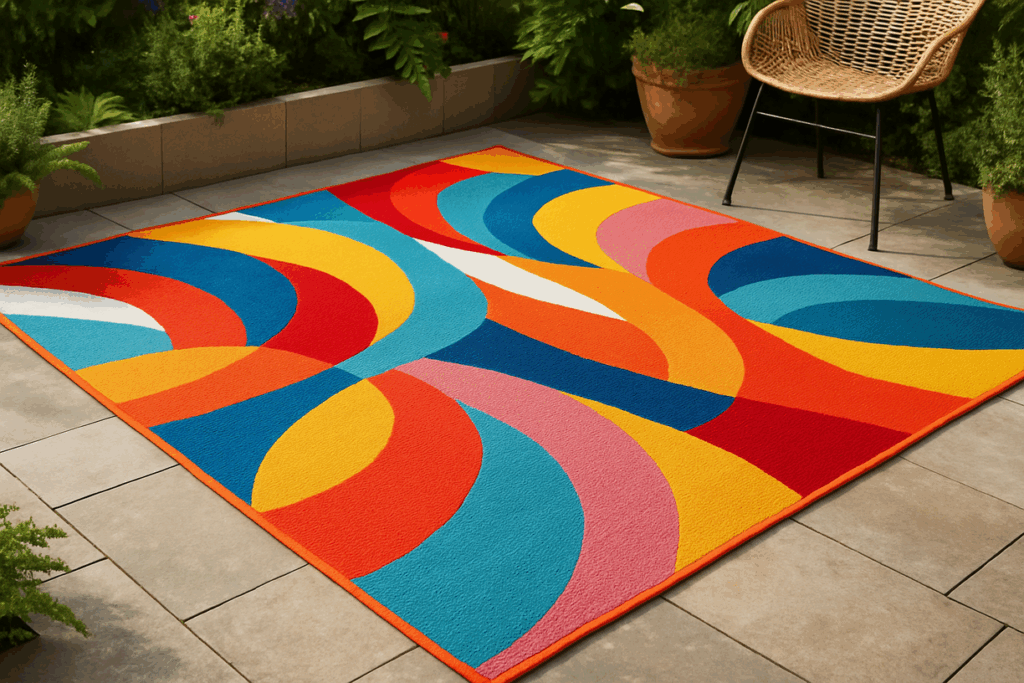
Indoor-outdoor rugs are crafted from materials like polypropylene, making them resistant to moisture, stains, and fading. Their durability and ease of cleaning—often requiring just a hose-down—make them an excellent choice for dining rooms, especially those that open to outdoor spaces. These rugs come in various styles and patterns, allowing for aesthetic flexibility.
5. Rule 4: Opt for Low Pile or Flat Weave
Low-pile or flat-weave rugs are ideal for dining rooms. Their short fibers make it easier to move chairs and clean up crumbs or spills. High-pile rugs, while plush, can trap food particles and make chair movement cumbersome. Flat-weave rugs offer a sleek look and are often reversible, extending their usability. They also tend to be more affordable and easier to clean than their high-pile counterparts.
6. Rule 5: Select Colors and Patterns Wisely
Choosing the right colors and patterns for your dining room rug matters for both aesthetics and practicality. The rug serves as a visual anchor, tying together the room’s elements, and its design can influence the dining experience.
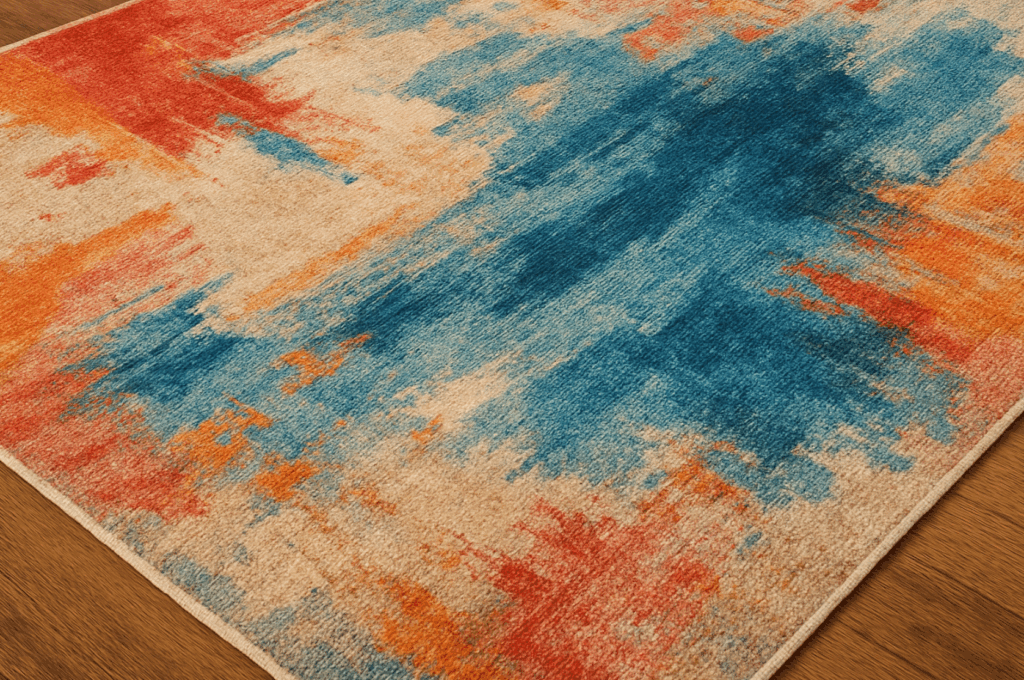
Harmonize with Existing Decor
Begin by assessing your dining room’s current color scheme and style. If your space features neutral tones, a rug can introduce a pop of color or pattern to add interest. Conversely, in a room with bold colors or intricate designs, a rug in a subdued hue can provide balance. For instance, a dining room with vibrant walls might benefit from a rug in earthy tones like greens, browns, or caramel, which are favored for their calming effect and versatility.
Practicality in Color Choices
Dining areas are prone to spills and stains, making the rug’s color an important consideration. Darker shades or rugs with intricate patterns can effectively conceal minor blemishes, maintaining a clean appearance over time. For example, a rug with a mix of colors and patterns can hide stains better than a solid light-colored rug.
Pattern Selection
Patterns can add depth and character to your dining room. Geometric designs offer a modern touch, while floral or oriental patterns can introduce a traditional or eclectic vibe. When selecting a pattern, consider the size of your dining room; larger patterns can make a small room feel even smaller, whereas smaller, repetitive patterns can create an illusion of space.
Current Trends
Staying updated with current design trends can inspire your rug choice. For instance, the “Colorful Quiet Luxury” trend emphasizes bold hues combined with understated sophistication, suggesting that a rug in a rich jewel tone could serve as a statement piece without overwhelming the space.
7. Rule 6: Use Rug Pads for Safety and Longevity
A rug pad is an often-overlooked accessory that can significantly enhance your rug’s performance. It prevents the rug from slipping, reducing the risk of accidents. Additionally, a pad provides extra cushioning, making the rug more comfortable underfoot. It also protects your flooring from scratches and extends the rug’s lifespan by reducing wear. Choose a rug pad that suits your floor type and rug size for optimal results.
8. Rule 7: Consider Maintenance and Lifestyle
Selecting the ideal dining room rug involves more than just aesthetics; it’s about aligning with your lifestyle and ensuring ease of maintenance. Your daily routines, household dynamics, and personal preferences play pivotal roles in determining the most suitable rug for your space.
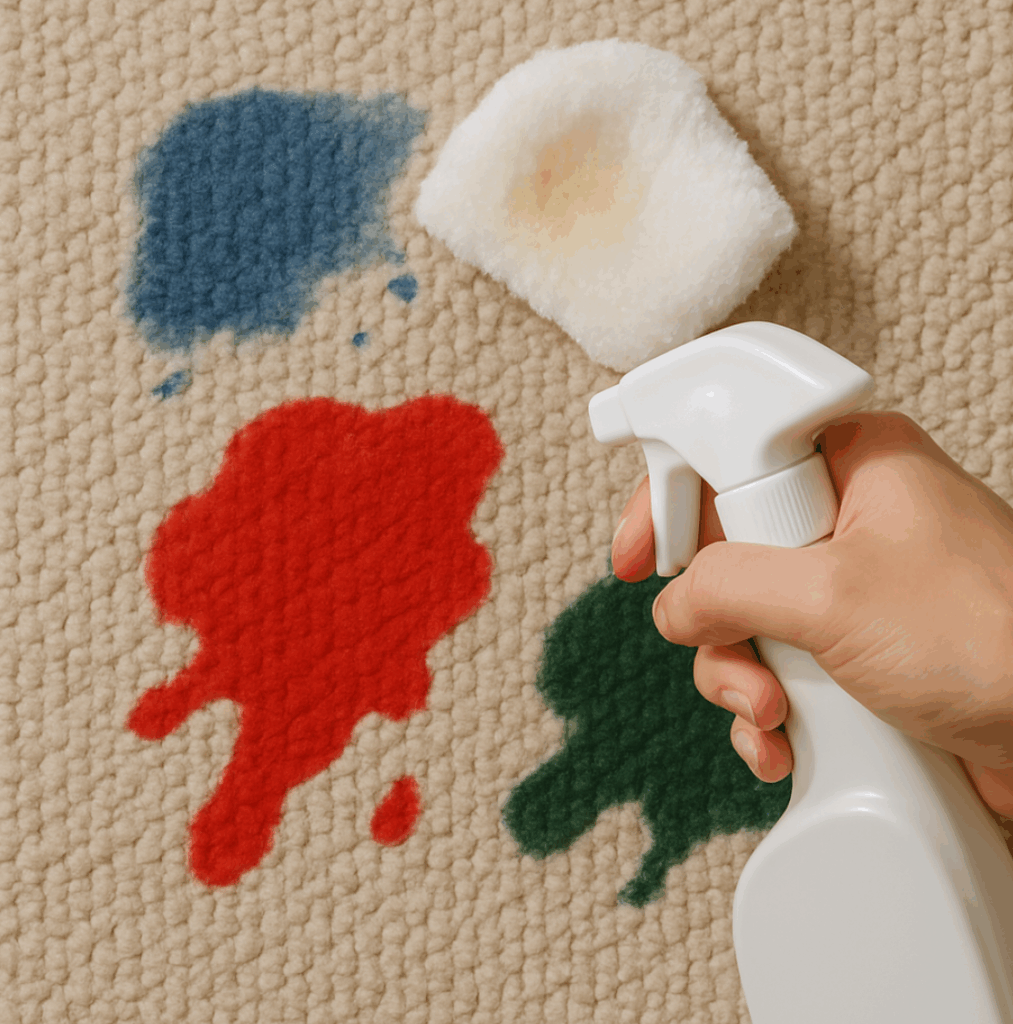
Assess Your Household Dynamics
- Families with Children or Pets: Opt for rugs made from durable and stain-resistant materials like polypropylene or nylon. These synthetic fibers are known for their resilience and ease of cleaning, making them ideal for high-traffic areas prone to spills and messes.
- Frequent Entertainers: If your dining area often hosts guests, consider rugs that can withstand frequent use and are easy to clean. Low-pile or flat-weave rugs are preferable as they don’t trap crumbs and are easier to vacuum.
- Allergy Concerns: For households with allergy sufferers, natural fiber rugs like wool can be beneficial due to their hypoallergenic properties. Regular cleaning is essential to minimize allergens.
Maintenance Tips
- Regular Vacuuming: Vacuum your dining room rug at least once a week to remove dirt and prevent debris from settling into the fibers. For high-traffic areas, consider vacuuming more frequently.
- Immediate Spill Response: Address spills promptly by blotting with a clean, dry cloth. Avoid rubbing, as it can push the stain deeper into the fibers. Use a mild detergent solution for spot cleaning, and always test in an inconspicuous area first.
- Professional Cleaning: Depending on usage, have your rug professionally cleaned every 12 to 18 months to maintain its appearance and longevity.
Lifestyle Alignment
Your rug should complement your lifestyle:
- Busy Households: Prioritize durability and ease of cleaning.
- Design Enthusiasts: Focus on aesthetics, but ensure the rug can handle the room’s usage level.
- Eco-Conscious Individuals: Seek rugs made from sustainable materials and processes.
9. Conclusion
Selecting the right dining room rug involves balancing aesthetics with practicality. By considering factors like size, shape, material, and maintenance, you can choose a rug that enhances your dining space’s comfort and style. Remember, the best rug is one that fits seamlessly into your lifestyle while elevating your room’s ambiance.
10. FAQs
Q1: Should the dining room rug be larger than the table?
Yes, ideally, the rug should extend at least 24 inches beyond the table on all sides to accommodate chairs.
Q2: Are patterned rugs better for dining rooms?
Patterned rugs can help conceal stains and wear, making them a practical choice for dining areas.
Q3: Can I use a high-pile rug in the dining room?
It’s not recommended, as high-pile rugs can trap crumbs and make chair movement difficult.
Q4: How do I clean a dining room rug?
Regular vacuuming and prompt spill cleanup are essential. For deep cleaning, follow the manufacturer’s instructions or seek professional services.
Q5: Do I need a rug pad under my dining room rug?
Yes, a rug pad prevents slipping, adds comfort, and extends the rug’s lifespan.

